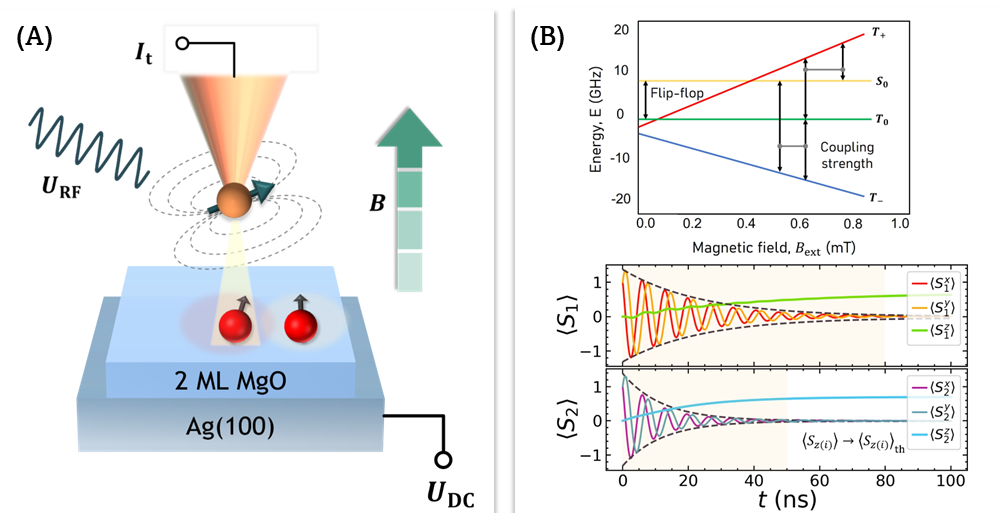Contributed talk
Probing magnetic coupling of spins on surfaces using EPR-STM
Aishwarya Vishwakarma, S. Kovarik, R. Schlitz, D. Ruckert, P. Gambardella, and S. Stepanow
Department of Materials, ETH Zurich, 8093 Zurich, Switzerland
The invasive nature of quantum measurements presents a challenge in manipulating spin states and magnetic interactions, which are crucial for quantum computing. In this study, we utilize spin-polarized scanning tunnelling microscopy (STM) to conduct an electron paramagnetic resonance (EPR) experiment. This enables us to investigate the magnetic interaction between coupled quantum spins. While STM is a powerful method for characterizing the electronic properties of conducting materials with atomic spatial resolution, its energy resolution is limited (>1 meV at 4 K). On the other hand, EPR is commonly employed for spin detection but lacks spatial resolution. By combining EPR with STM, we can image and coherently control spins on surfaces with significantly improved energy resolution (<1 μeV) [1]. The EPR-STM technique has recently been employed to examine the spin-spin interaction in dimers of atoms and metal-organic complexes [2]. Here, we demonstrate the dominant exchange coupling between the two spins within a dimer as a function of their orbital overlap by systematically investigating the interaction based on their configuration on the surface. Such measurements will enable us to probe the properties of exotic quantum many-body states at the atomic scale and gain a better understanding of their magnetic interactions. This, in turn, paves the way for the development of molecule-based spintronic devices. Additionally, this study offers a non-invasive approach to obtaining the intrinsic properties of a nearly isolated spin.
 Figure 1: (A) Schematic of the EPR-STM experiment on coupled spins on MgO/Ag(100). A radiofrequency (RF) antenna excites one of the spins, and the response is detected by a magnetically sensitive tip via tunnel magnetoresistance. (B) The energy level scheme depicted here represents transitions between states in the presence of an external field Bext. Further, the coupled spins experience different bath leading to different relaxations.
Figure 1: (A) Schematic of the EPR-STM experiment on coupled spins on MgO/Ag(100). A radiofrequency (RF) antenna excites one of the spins, and the response is detected by a magnetically sensitive tip via tunnel magnetoresistance. (B) The energy level scheme depicted here represents transitions between states in the presence of an external field Bext. Further, the coupled spins experience different bath leading to different relaxations.
[1] T. Seifert. et al., Science Advances 6, 40 (2021)
[2] Y. Chen et al., Adv. Mater. 2022, 2107534.